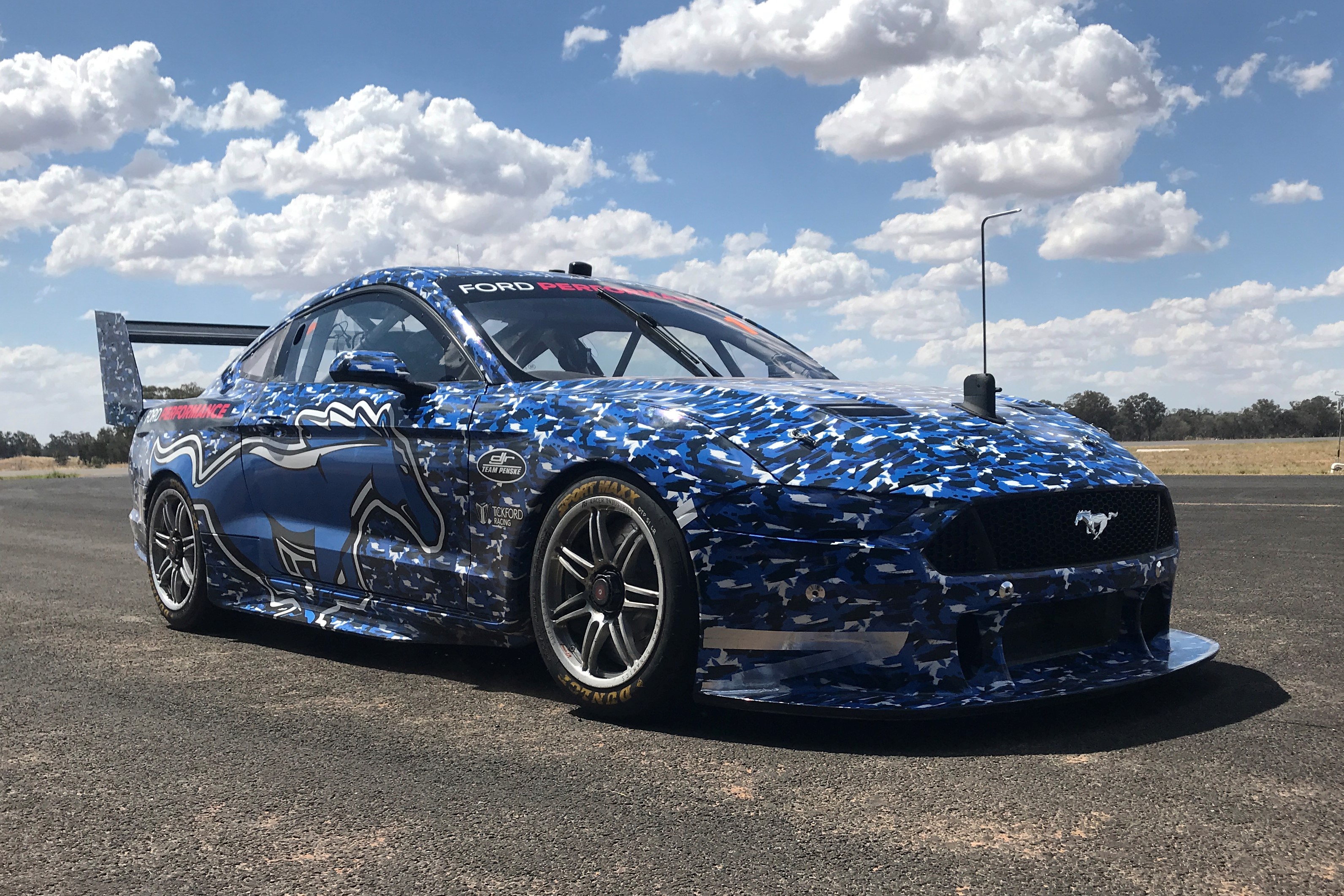

Supercars is investigating ways to evolve its aerodynamic homologation process including possible use of wind tunnels in order to avoid in-season parity investigations.
The championship has moved to conduct a thorough analysis of the Ford, Holden and Nissan with the new-for-2019 Mustang, constructed within the rules, under scrutiny following its flying start to the campaign.
An investigation into centre of gravity has already resulted in changes to both the Ford and Holden models, while aero is now under scrutiny with Supercars and external partners analysing data following claims that the Mustang is perceived to have an advantage in long, fast corners.

This has arrived despite Supercars approving the Mustang’s aero package during the category’s mandatory aero testing, required to homologate a new model.
The process undertaken late last year involved 11 days of straight line aero testing where the Mustang was matched against the Holden ZB Commodore and Nissan Altima.
Supercars’ technical department oversees the process using the data gathered from the tests to ensure parity across the aero packages, with the 2018 results understood to be the closest ever.
However, this scenario only measures aero in a straight-line which has led to calls for the process to be improved.
Given the current parity debate in the paddock, the series is actively looking into options to add more science and accuracy to its aero homologation process.
Supercars CEO Sean Seamer says the option of transporting cars to offshore wind tunnels in the US is being investigated.
“Absolutely we can always be better,” Seamer told Speedcafe.com.
“We were really happy with the numbers that we got off the back of the last VCAT (V8 Supercars Aerodynamic Testing).
“There were some new procedures that we were looking at introducing at the last process, that we weren’t able to.
“But as part of this (parity investigation) process, we’re taking on feedback from other parties and partners that we’re using, to see how we can evolve that process for the end of the year.
“I think right now, they (wind tunnels) seem quite expensive.
“It’s also a lot of time that the cars are going to be out of the country.
“But we’re continuing to evaluate the opportunities and I would imagine that in the next couple of months, we’ll have that cost benefit analysis worked through.”

Ford homologation team DJR Team Penske has reiterated the fact that the Mustang was built to the series regulations, however welcomes any measures that can improve the VCAT process.
“The Mustang is the result of hard work and sweat equity by ourselves and Tickford, combined with the world class expertise of Ford Performance,” said DJR Team Penske Team Principal Ryan Story.
“The car was designed, developed and subsequently homologated to Supercars rules, and signed off by both the series and all three homologating teams representing all three makes in late 2018 for its 2019 entry to the series.
“Technical Parity is the cornerstone of our series and if wind tunnel testing was to be carried out and it’s done using world-class facilities, then we will have taken a step forward as a category.
“The reason we haven’t gone in that direction to date is the prohibitive cost of such facilities and that none exist here in Australia, but we understand that the Series technical department is working hard with its partner D2H to improve the VCAT process and make it better.
“We welcome that, as well as the opportunity to preserve the quality of our on-track product and the closeness of our racing.”
Meanwhile, Holden homologation team Triple Eight has also backed the use of wind tunnels but believes that aerodynamic features on cars need to be better policed at Supercars’ homologation tests.
“It’s actually an awesome way to do it and it’s not crazy expensive,” Triple Eight team manager Mark Dutton told Speedcafe.com regarding wind tunnels.
“You’d be surprised the amount you can get through if you’re prepared well.
“You’re (able to) put in basically linear actuators so you can run through ride heights and all that kind of stuff. You ideally want to go to a rolling road so you get it as close to as on a race track as possible and you put your car on and it’ll do these sweeps.
“If you’re not trying to then tune the car, as such, you’d achieve a lot in a day.
“There’s two ways to look at it. That’s definitely a better test for sure, but then it’s also controlling the features of the cars.
“So that’s what’s got the category up until 2018 being as close as possible (because) there were more limitations on the features of cars. That’s the mistake that’s happened.
“The allowances given for too many features that make the testing so complicated and so far from the actual, that’s the difference.
“So you make the choice. Do we allow those features, which makes it harder to police, or do we reign in the features, slash the amount of downforce?”




















Discussion about this post